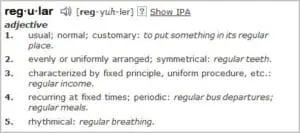 You might find this post to be annoying. . . you might find it to be a great relief. Let’s see…
You might find this post to be annoying. . . you might find it to be a great relief. Let’s see…
Companies fail in creating content
When it comes to content creation for the company website or blog, almost every business I’ve ever seen does it wrong. They just don’t get it. And because they they don’t get it, they FAIL — they quit posting new content because “it’s not working”.
Here are a few reasons that they fail:
- There isn’t complete buy-in from ALL employees, top to bottom. All… that includes the CEO and the evening cleanup-crew. All.
- Employees don’t understand what great content can do for the company as a whole, and for them as individuals.
- Employees don’t understand how to use their own skills to produce valuable content.
- Everyone expects ‘the marketing director’ to handle it. He or she is the “voice of the company”. He or she has the talent and skills necessary to write good content.
Who is qualified to write content for the company blog?
Actually, everyone in the company is qualified to write content for the blog. Here’s what I tell our clients: “If any employee of your company has ever answered a customer question, then they’re qualified.”
In this economy, companies need BIG results
We know from data gathered from over 5,000 business websites that the #1 fastest way to drive more traffic to your website is to regularly blog. Regularly means AT LEAST twice a week. But regular also means to do it ongoingly, uniformly, consistently.
 For BIG results, it is important that businesses execute an effective social media strategy and get everyone on board. This will involve training, cohesive business culture, and building a system where all of the important parts can participate.
For BIG results, it is important that businesses execute an effective social media strategy and get everyone on board. This will involve training, cohesive business culture, and building a system where all of the important parts can participate.
BIG results will require getting everyone on-board
To get BIG results, you need everyone. The whole team (isn’t that the idea of a team?). Employees need to be introduced to content marketing in a way that theycan understand it, and can understand its impact on the company’s bottom line. They also need to understand how each and every one of them can utilize thier own skills and talents, within their ear of expertise, to produce content.
Employee-produced content allows each of them to share more of themselves on the company website so as to form stronger relationships with their clients asnd customers (personal branding).
Some advice for helping your employees understand their role in content creation
- Understand. Before you do anything else, you have to spend time understanding your internal culture and your employees’ facility with social tools. Understand your organizational objectives and map your goals of social media engagement to that.
- Educate. Most people fall down due to lack of education. One training session does not qualify as “education.” Commit to ongoing workshops and extend the conversation.
- Extend the conversation. Make sure to create a space where people can find you and ask questions. It can be an internal blog, wiki, or an internal discussion group.
- Empower. Highlight the “Dos” over the “Don’ts” from your policy. Make sure to focus the discussion on positive behaviors in your governance. What do you want people to do to drive their careers and the company forward?
- Create a solid process. This is the part that takes the most time, so don’t despair if it doesn’t work on the first try. For example, how do you ensure that your sales team adequately covers social media without replying to one person from more than one sales account? How do your systems talk to each other? Make sure that every part of the organization is looped in. Find a way of sharing information and collaborate around it.
- Tune into “WIIFM”. People always want to know “What’s In It For Me.” Make sure to address how proper social media training is good for employees’ individual careers. When talking to sales people, for example, recognize that Twitter can augment the sales process from lead discovery to post-sales, and give your team the tools necessary to be successful.
- Address problems proactively and gently. There will be things that go awry. It’s always better to politely point out the problematic tweet or blog comment in private. Most people want to do the right thing even if they make mistakes. Identify problem areas for your organization and create additional guidance around them.
- Address internal social, too. Make sure that your governance extends to your internal collaboration groups and networks. At my company, we advise our customers to create a usage policy that outlines the Dos and Don’ts of behaviors in their networks. One of these behaviors, for example, is to not repost private discussions into public forums.
- “These thoughts are my own.” Encourage people to speak for themselves, not the brand, even when they are talking about the space and the company. Make sure that your employees as well as official spokespeople have access to brand documents and Q&As.
Minimal effort by each individual leads to outstanding company output
Immediate benefits would be diversity of content ideas for the social media posts as well as giving the employees a sense of inclusion in something more meaningful.
If the time commitment for each employee is minimal and easy to execute (i.e”social media task” ) then it could be effective with out a large amount of time for the employee. Examples of quick and easy content:
1. Customer testimonials from the sales team (easy copy and paste)
2. Short 2 paragraph blogs discussing new product releases- 5 mins
3. Post Questions for customers to answer and participate- 2 mins
4. Post/ tweet sales promotions/daily deals for followers. – 2-5 minutes
The benefit to the company would be if 30 employees post something each day based on the strategy, then that is 30 activities per day. For a 150 employee company, each employee would only have to post one time each work week, and the company would have 150 meaningful “touches” to their followers.
Contact us for more tips on changing your social media culture. We also speak at in-house culture change events.





